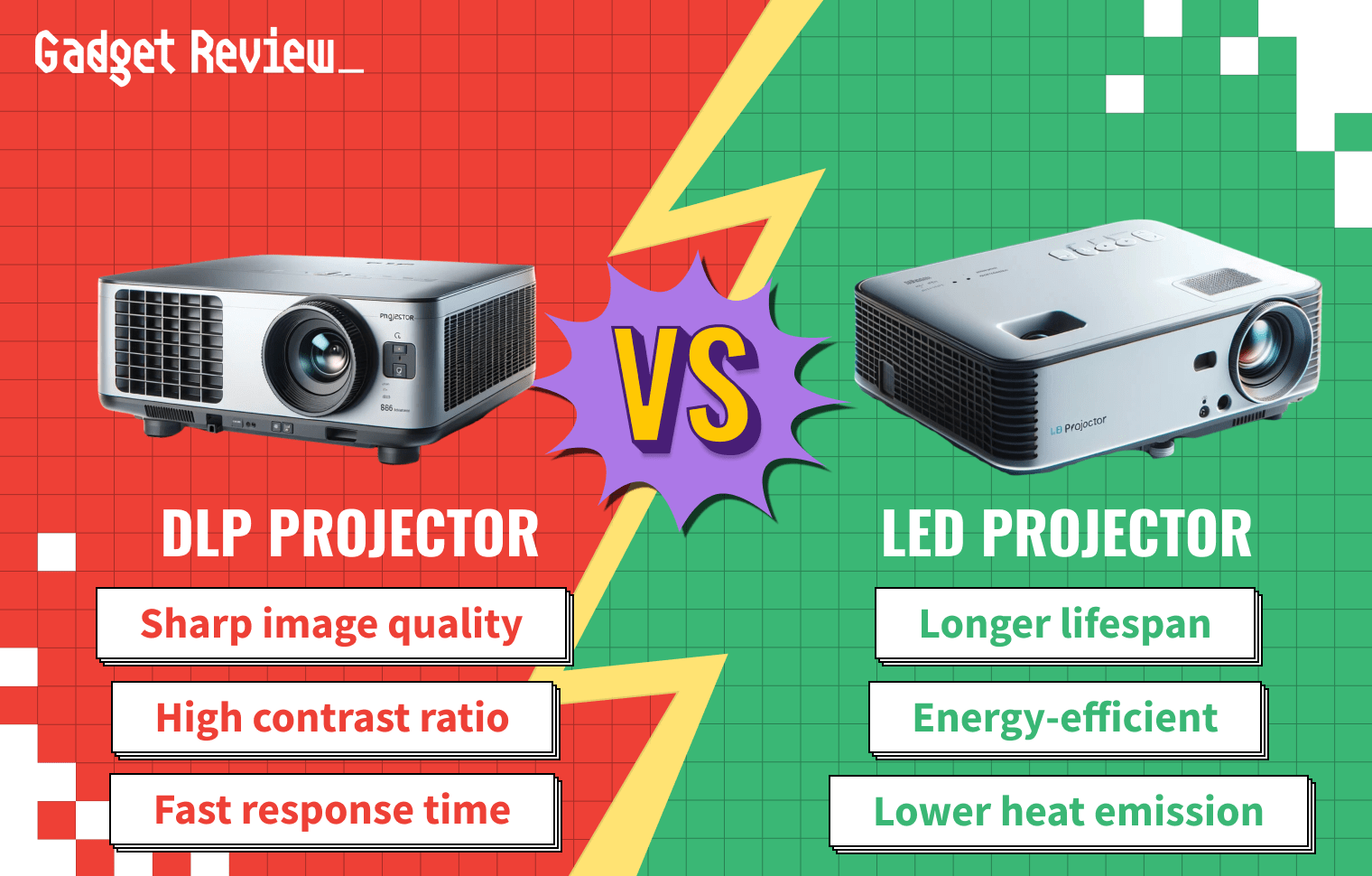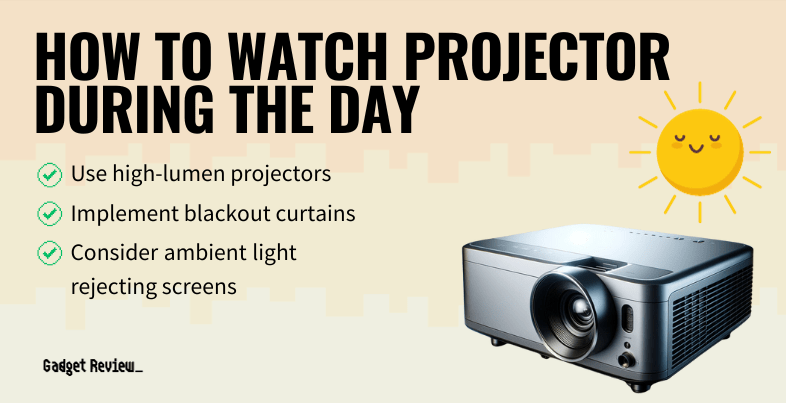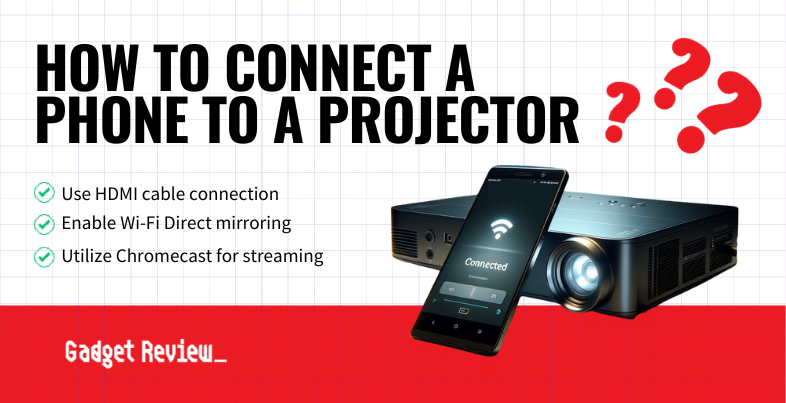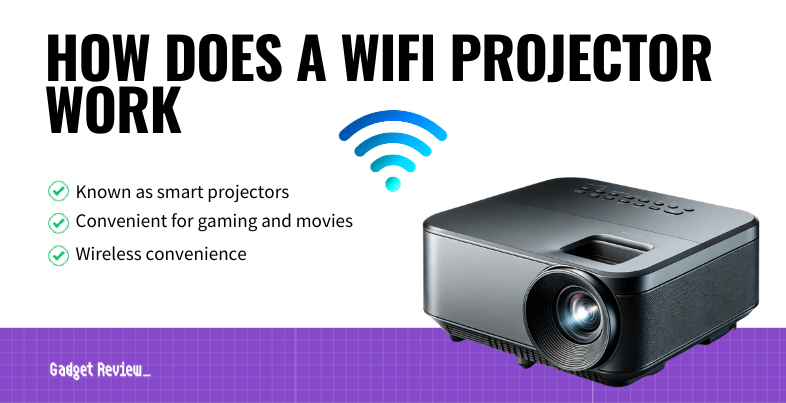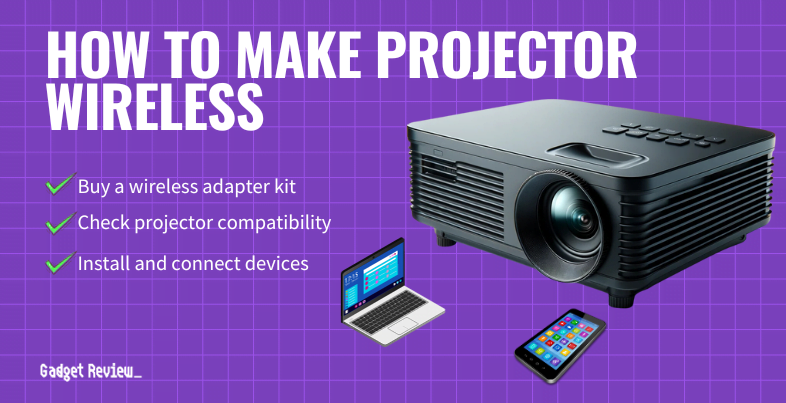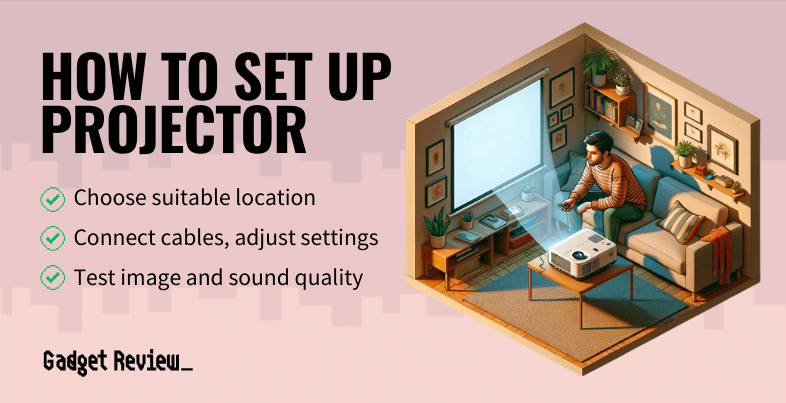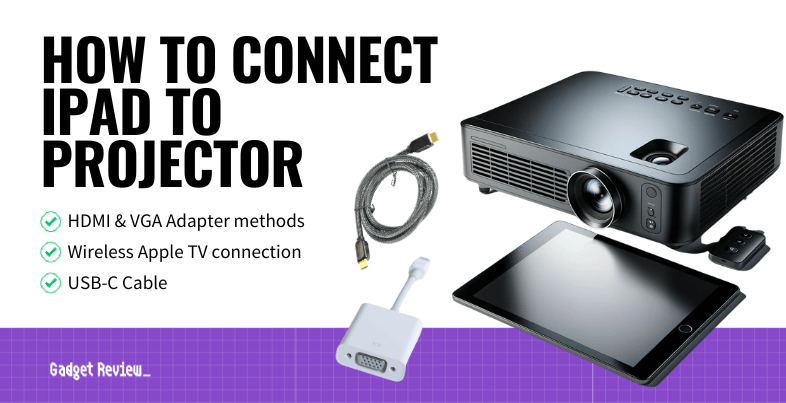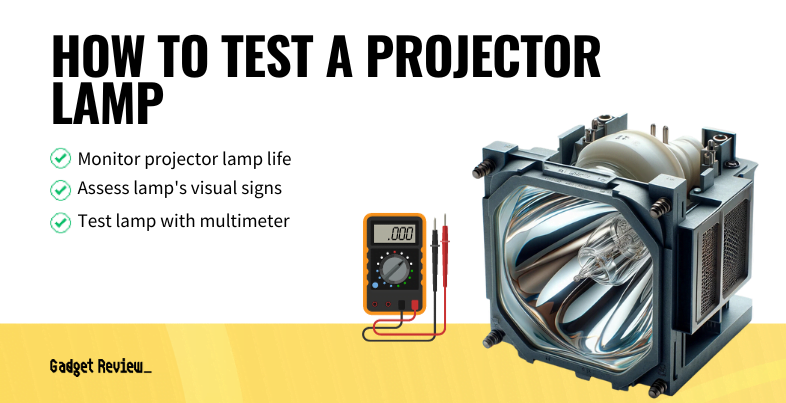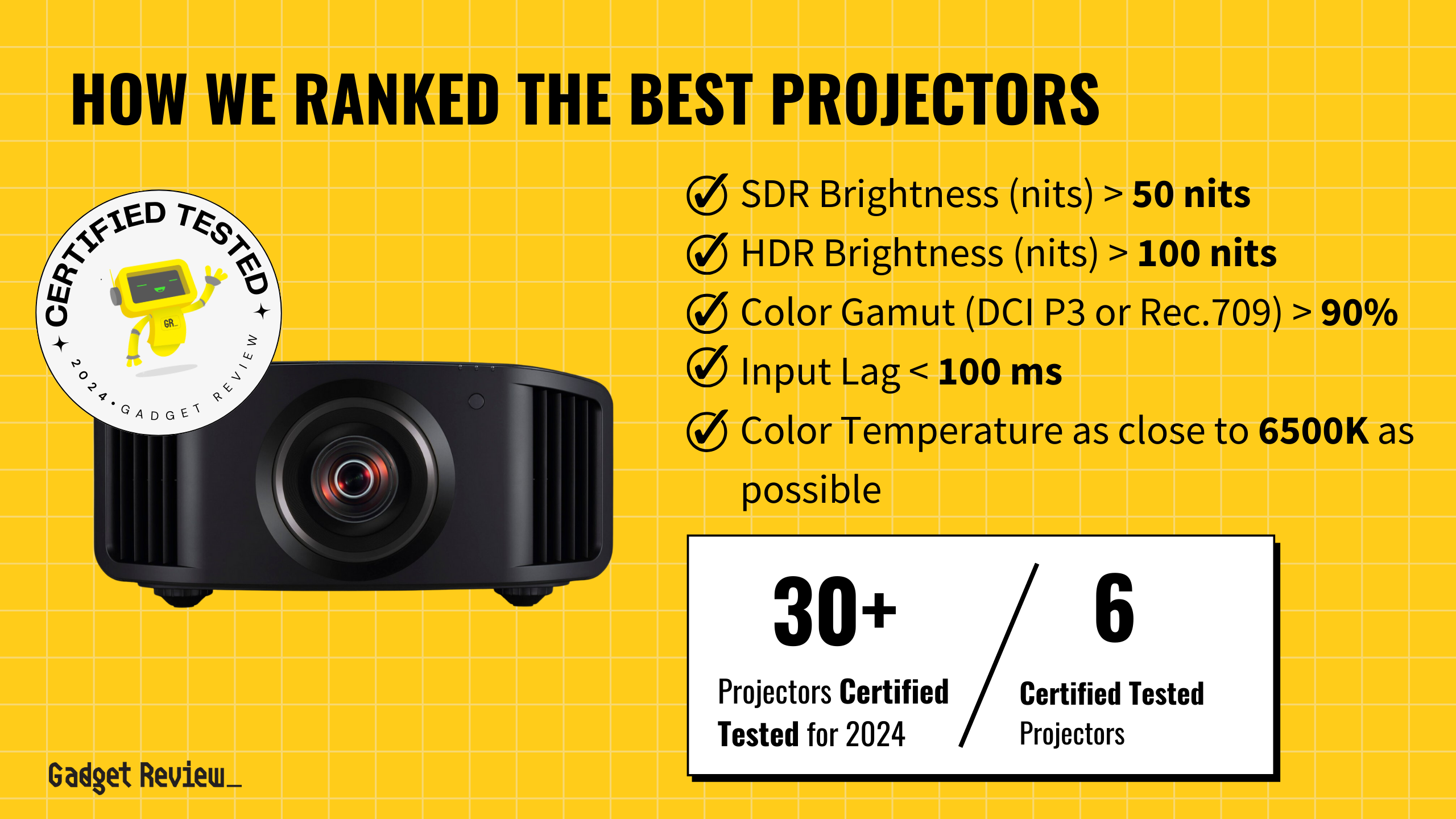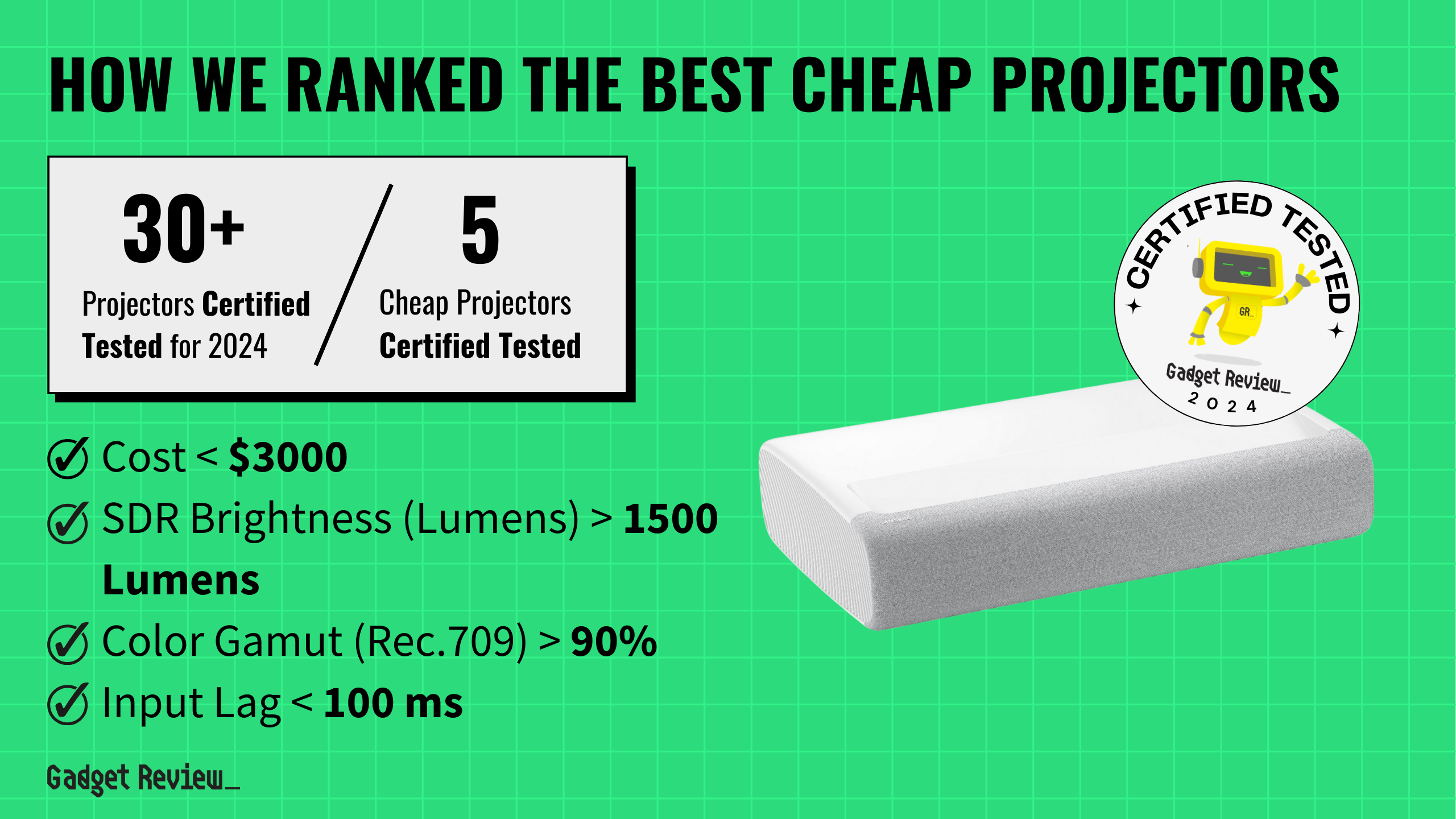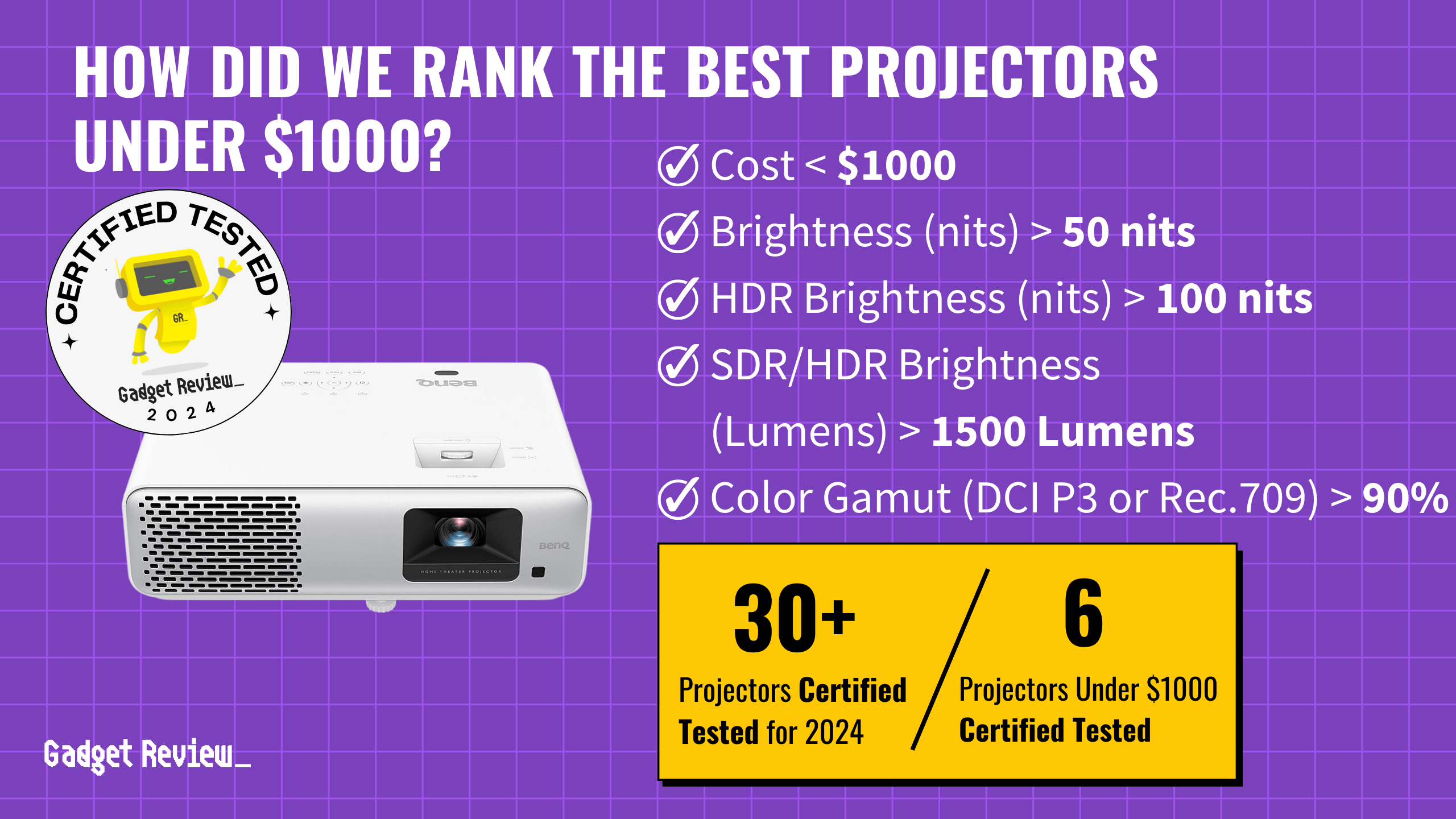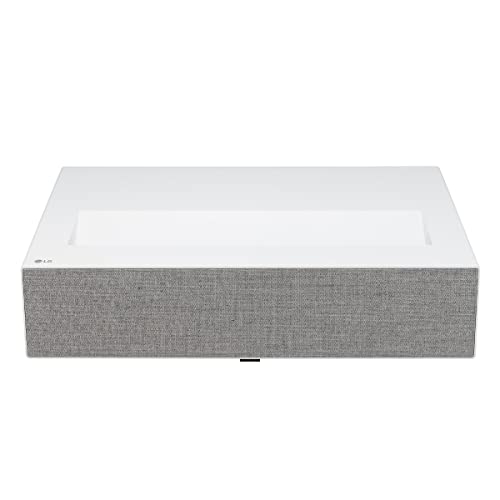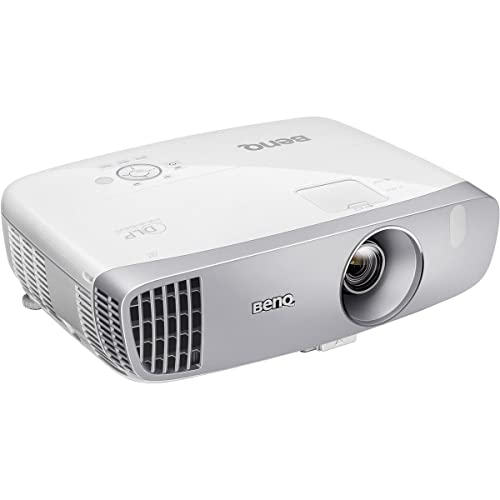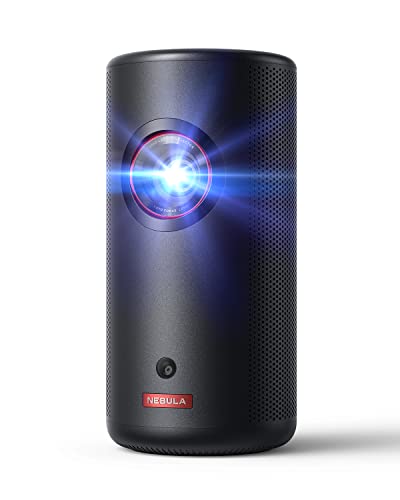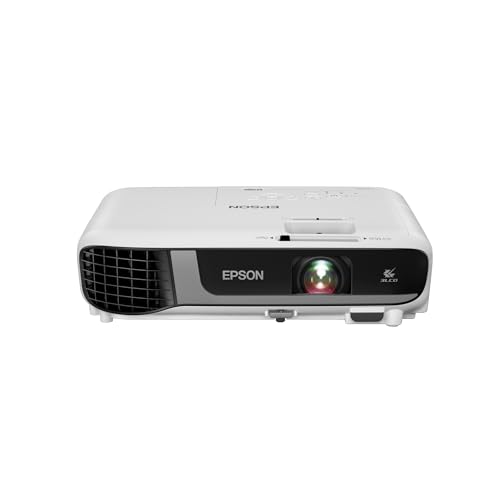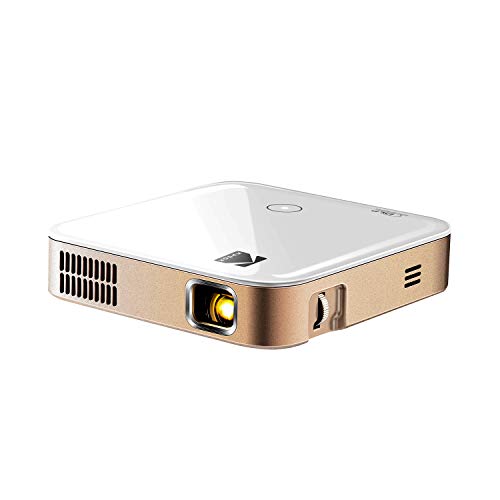If you’re in the market for a projector, you’ve likely come across digital light processing (DLP) projector and light-emitting diode (LED) ones. But what’s the difference?
Well let’s highlight a big point first: this comparison is like comparing apples and oranges. These two are not within the same area of projectors.
- DLP: This is a type of projection technology. Developed by Texas Instruments, DLP projectors use a chip made of thousands of tiny mirrors, each representing a single pixel. These mirrors tilt to modulate light and create an image. DLP projectors can use various light sources, including traditional lamps, LEDs, or lasers. A fairer comparison would be DLP vs LCD vs LCoS projectors. We also explain the differences between DLP vs 3LCD projectors.
- LED: This refers to a type of light source used in projectors. LED projectors use these small, energy-efficient diodes to produce light. This light is then used to create an image, either through DLP technology, LCD (Liquid Crystal Display), or another projection method. LED projectors are known for their lower power consumption, smaller size, and longer lifespan compared to traditional lamp-based projectors. A fairer comparison would be LED vs. laser projectors.
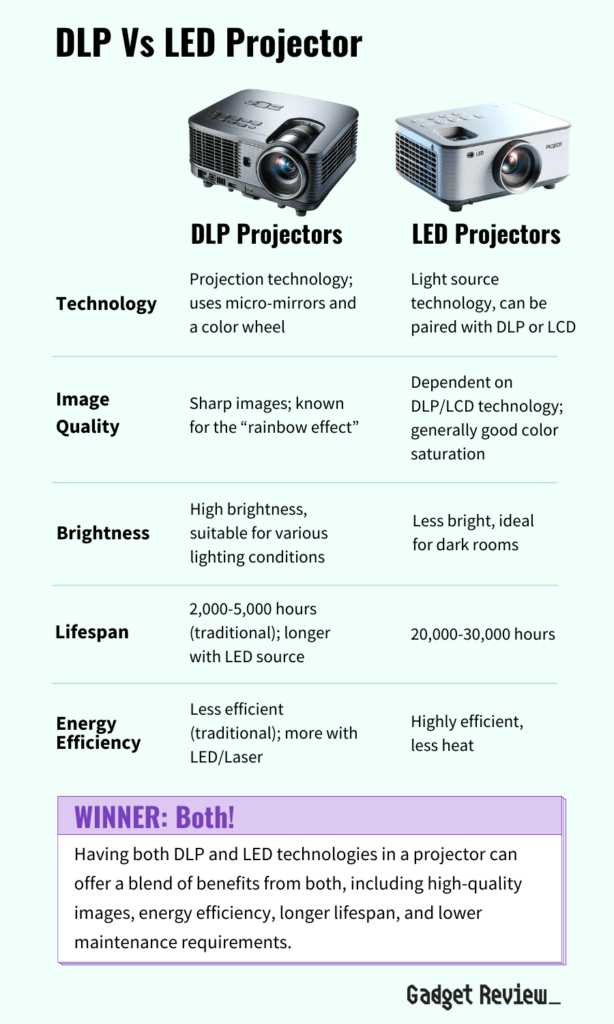
So technically you can have DLP projectors that use LED as their light source, combining the benefits of both technologies.
DLP vs. LCD vs. LED Projectors
Let’s compare both against liquid crystal display (LCD) projectors for further clarity.
| Feature | DLP Projectors | LCD Projectors | LED Projectors |
|---|---|---|---|
| Technology | Uses micro-mirrors and a color wheel | Uses liquid crystal displays for image projection | Light source technology, can be paired with DLP or LCD |
| Image Quality | Sharp images; known for the “rainbow effect” | Vibrant colors, excellent brightness | Dependent on DLP/LCD technology; generally good color saturation |
| Brightness | High brightness, suitable for various lighting conditions | High brightness, effective in well-lit rooms | Less bright, ideal for dark rooms |
| Lifespan | 2,000-5,000 hours (traditional); longer with LED source | Similar to DLP; longer with LED source | 20,000-30,000 hours |
| Energy Efficiency | Less efficient (traditional); more with LED/Laser | Less efficient compared to LED | Highly efficient, less heat |
| Portability | Compact and portable | Generally larger, less portable | Small and portable. |
| Cost | $300-$2,000; varies by model and features | $200-$4,000; dependent on features and quality | $100-$1,500; higher initial cost, lower running costs |
| Maintenance | Low; dust sensitivity | Regular cleaning needed for filters | Low; minimal dust issues |
| Application | Home theaters, business | Education, business, home theaters, large spaces | Personal use, home cinemas, mobile presentations |
Again, DLP projectors utilize a chip composed of tiny microscopic mirrors and a spinning color wheel to create images.
- These devices are known for sharp images, minimal need for filter maintenance, excellent response time and 3D capabilities.
- However, the lamp life of DLP projectors ranges only from 2000 to 5000 hours. Additionally, in certain scenes, some users may notice color ghosting or banding.
In contrast, LCD projectors use liquid crystal display technology.
- These models, void of moving parts, are generally less expensive making them an ideal choice if you’re on a budget.
- You can expect better color saturation, lower noise levels, and superior performance for movies from a 3-chip LCD projector.
- These projectors, however, require constant filter maintenance and produce less contrast compared to their DLP and LED counterparts.
warning
An LED projector often refers to the light source for the projector only, so you should check the product description for the technology type.
Last, we have LED projectors which employ diodes as light sources.
- These projectors boast a whopping lifespan of over 20,000 hours.
- With LED projectors, you’ll experience vibrant colors, lower power consumption, and virtually zero maintenance costs.
- These projectors are more compact, generate less heat, and are lighter than other models, making them an excellent choice for portability.
The projector you choose could make the difference between a good presentation or movie night and a great one. Consider your specific needs and preferences when deciding on the technology that’s right for you. From producing brighter images to having longer lasting light sources, each technology offers unique advantages that set them apart.
Which Projector Type is Ideal for You?
Choosing between LED-DLP and LED-LCD projectors depends on specific needs and environments. LED-DLP projectors are ideal for home theaters and portable presentations, offering clear images and good contrast in darker settings. However, the potential “rainbow effect” in DLP projectors might be a concern for some viewers.
STAT: The LED projector has a lifespan of over 20,000 hours, delivers better colors, and potentially has little to no maintenance cost. (source)
LED-LCD projectors, combining LCD’s natural color accuracy with LED’s longevity, excel in well-lit spaces like classrooms and living rooms, offering vibrant colors and consistent brightness. They suit color-critical tasks and wider viewing angles but are generally less portable than LED-DLP projectors.
What are DLP Projectors?
There are various types of DLP projectors, each with its unique features. The Single-chip DLP projector, utilizing a single DMD (Digital Micromirror Device), is celebrated for its speedy response time and high image quality. It’s the most common model of DLP projectors you’ll come across.
Three-chip DLP projectors employ a separate DMD for each primary color—red, blue, and green. Bringing to the table precise color accuracy and superior brightness, these projectors are a cut above. For those seeking premium image quality and intricacies, the 4K DLP projector hits the mark with its high-resolution DMD.
Portable DLP projectors, light yet sturdy, are ideal for those presentations on the go. If you’re space-constrained, short-throw DLP projectors can project impressive large images from a short distance. Meanwhile, interactive DLP projectors come with added interactive features like touchscreen, stylus, and finger touch.
Maintenance is hassle-free as DLP projectors come with a filter-free, sealed chip design. Despite their perks, keep in mind your personal needs and cost constraints while choosing the most suitable projector. More to come as you explore the world of projectors and their unique features.
What are LCD Projectors?
Utilizing Liquid Crystal Display technology, this type of projector stands apart from its Digital Light Processing (DLP) counterparts in a number of ways.
To begin with, LCD projectors transfer light through LCD panels to create an image – a method known as transmissive imaging technology. Because of this, they are often more light efficient. That’s right! If brighter images are your endgame, LCD projectors may be worth your time.
Let’s talk about the cost. LCD projectors are generally more affordable than their DLP counterparts. So, if the price point is a factor on your checklist, an LCD model could be the ticket.
Though LCD technology doesn’t use microscopic mirrors or a color wheel to project images like DLP projectors, it creates high-quality images, thriving especially in conditions with controlled lighting.
Bear in mind that every projector technology has its strengths and weaknesses. For instance, as compared to DLP projectors that utilize a myriad of microscopic mirrors, LCD projectors may not offer as high contrast ratios.
What are LED Projectors?
LED projectors use Light Emitting Diodes, a technology that’s energy efficient and long-lasting. They’re known for their vibrant colors and deep blacks, making them a top choice for movie enthusiasts. While they may not be as light efficient as LCDs, their color accuracy and lifespan can make them a worthy investment.
insider tip
LED projectors eliminate the color wheel that causes color breaking, providing more consistent colors.
So, when you’re deciding between DLP and LED projectors, remember to consider your personal preferences and the specific needs of your viewing environment. There’s no one-size-fits-all answer, but with the right knowledge, you’re sure to make a choice that’ll enhance your viewing experience.


